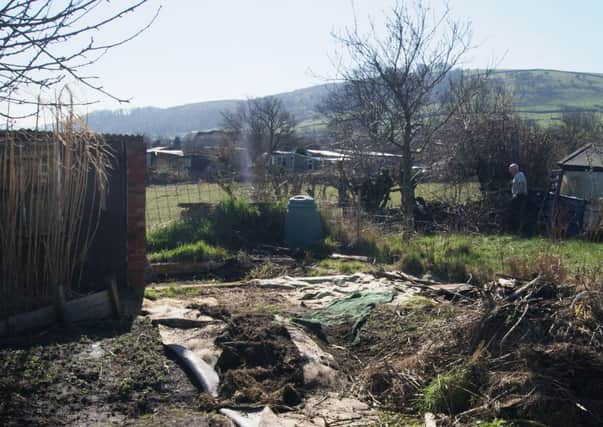Tough start to life on the allotment


I imagined growing some exotic and unusual vegetables and feeding the family off healthy organic produce. I waited a long time before finally reaching the top of the list and when I saw the plot I wished I hadn’t.
I suppose it should’ve occurred to me that people don’t generally give up allotments when they’re in good order, have easily worked soil and are producing a nice surplus of food. Anyone with half a brain would have figured out that they would inherit something that’d been neglected and needed work.
Advertisement
Hide AdAdvertisement
Hide AdEven if I had been thinking clearly I wouldn’t have entirely predicted some claggy soil that was overgrown with every weed imaginable and a random covering of wet carpet, bricks, burnt wood, general rubbish and mare’s tails. I looked at the mess in front of me and couldn’t quite decide where or how to start.
On the general principle that it’s better to do something rather than nothing I put my spade into one of the less challenging patches and tried to turn over the soil. It took several attempts from many angles and a good deal of swearing before I managed to turn a spade of earth over. I looked at the rest of the allotment and began to wonder if this really was the best retirement activity for a man with dodgy knees.
Like all things in life a bit of perseverance began to have results but I then discovered that it isn’t enough to dig over a neglected allotment, you also have to succeed in actually growing something.
I’m not entirely lacking in knowledge about plants, having been gardening for over 50 years, but there’s a big difference between growing a few herbs, flowers and fruits in a garden and producing a surplus of food from a plot of land that’s been covered in weeds.
Advertisement
Hide AdAdvertisement
Hide AdI dug the soil over carefully, pulled out all the weed roots I could find, dug it over, raked it, sprinkled expensive seeds into the ground and watered them in. Then I waited for my crop to do its business.
With lots of sunshine and several helpful showers of rain it was amazing how quickly things grew. Unfortunately it was the weeds that were growing. I’d left a very small amount of their roots behind when I dug over the soil but it was enough for them to race away and try to re-occupy the rest of the plot.
At this point I learned my first lesson. Don’t plant anything that looks like a weed when it comes up. Unfortunately leek seedlings look remarkably similar to grass seedlings and grow a lot slower. By the time I’d weeded out all of the grass, I’d also succeeded in pulling up the leeks.
My neighbour offered the advice that I might like to start my crop off in seed trays and more importantly, gave me some remains of his own early sowings - broccoli, sprouts, cabbage and cauliflower seedlings. I bought a load of cheap plants from the village gala plant stall and managed to get a few bean and pea seedlings into the ground along with some potatoes that had stayed too long in our cupboard and things started to grow.
Advertisement
Hide AdAdvertisement
Hide AdIt was then that I learned the next hard lesson of producing food. When you grow something nice to eat, you can guarantee that humans aren’t the only things that like to eat it. I’m proud to report that my first success was a couple of white cauliflower hearts. I’m less proud to report that the slugs got at them before I did.
So I went down to the supermarket and bought some mass produced cauliflower. It went remarkably well with the one exotic imported crop that I did manage to harvest. Well, potatoes do originate from South America don’t they?